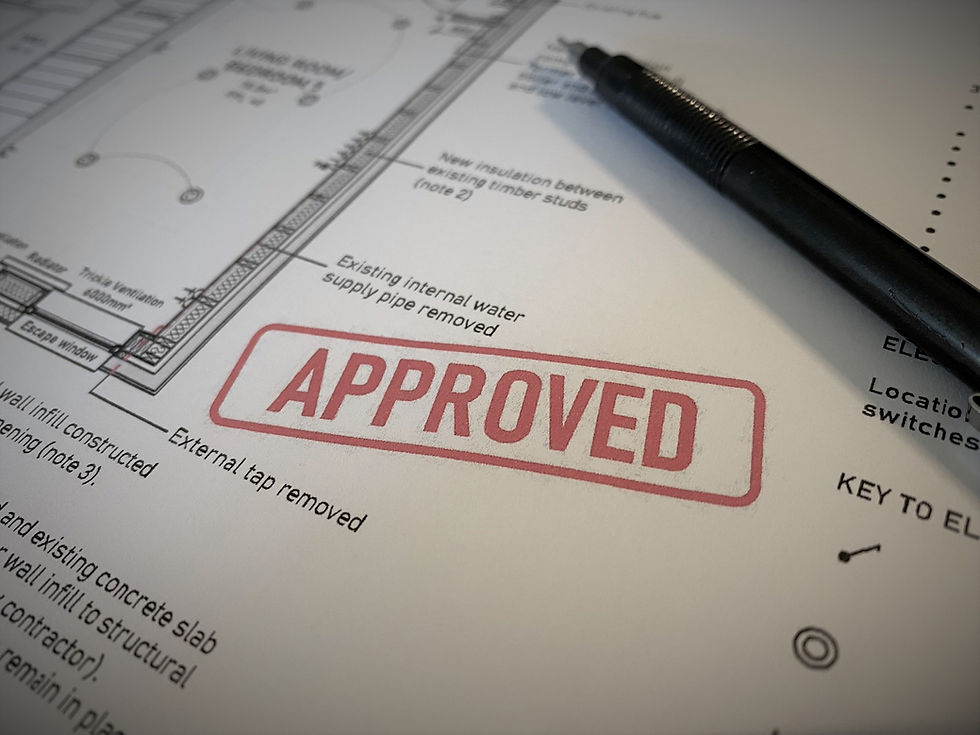What happens when you choose an architect?
- Neil Lambert
- Jun 18, 2021
- 3 min read
You might be thinking about making changes to your home or office and be wondering about using an architect – but what actually happens when you get in touch? In this post I take you through the first steps – next time I’ll talk about what happens once you’ve signed on the dotted line.

First contact
The first step is to get in touch – a phone call, an email, or a message via my Facebook page – whichever works best for you. Just a few basic details about you and your potential project will be enough to get the ball rolling.
Initial consultation
From there, I will arrange an initial consultation with you to explore your ideas, needs and aspirations for your project. During lockdown, meeting in person was tricky but I found video consultations worked well as the next best thing, allowing a virtual walkaround as well as a safely distanced face-to-face chat. Under more normal circumstances, though, a visit in person gives me the chance to have a proper look at your property and surroundings while we talk through your plans, to get a feel for the place and perhaps take a few key measurements. It can also be a good opportunity to meet other family members who have their own ideas to add or needs to take into account (including pets!). I will talk to you about budgets and how much you want to spend, but it’s not a problem if you don’t have a clear idea at this stage. I will give you an early steer on project costs to help you plan – more on this below. I’ll also discuss project timescales with you, and talk through the next steps.
Fee quotation
Following on from our meeting I will come back to you with my fee quotation – how much I will charge to carry out the services I think you need from me to achieve what you want. At this stage, with numbers flying around, I think it’s important to give potential clients an idea of what the overall cost of the project is likely to be to help you to prioritise, budget and plan savings or borrowing needed. I aim to provide an initial outline budget estimate, taking into account the potential build cost, along with the other elements – for example VAT, contingency, statutory and professional fees, including mine – that add up, to give you an idea of what you can expect to need to pay. It can be difficult to pin down costs at such an early stage, so I always advise that a client obtains a cost check from a friendly builder or quantity surveyor a little further down the line, once the project has been fleshed out some more. But I’ll help you to do that and get in touch with people if you don’t have a contractor in mind.
Fee proposal
If you’re happy with my quotation, I will follow it up with my formal fee proposal, which sets out more detailed terms and the services I’ll be carrying out for you. I’ll include a breakdown of my fee, explaining how it relates to different project stages and how much will be due when. On most projects my fee will be staged to coincide with key project milestones, such as completion of Planning or Building Warrant drawings and then receiving the permissions. I’ll also give you some more information on what each work stage involves, and what you’ll get at the end of it. The other important information to pass on at this stage relates to construction health and safety legislation known as the CDM regulations – this affects all construction projects, even the smallest, and I’m required to make you aware of your own responsibilities as a client. Don’t worry, they’re not big, and for the most part are typically passed on to other parties in the project such as the contractor or architect.
Appointment
The formal signed legal bit. I always use a standard written form of appointment – for most domestic projects this will be the ASP/2018 form, published by the Royal Institute of Architects in Scotland (RIAS). This is specifically aimed at domestic consumers and is focused on your rights and protection. It formalises all the main details agreed so far and records key project information, so everyone knows what to expect. There are also clear provisions included for termination of the agreement, just in case. Once the appointment is signed by both parties, the project is ready to get going, and this is where the fun starts…
Hopefully, this has given you an idea of the process involved in appointing an architect, and of the first stages in getting a project up and running. If you have a project in mind that you’d like to talk about, please do get in touch – I’d love to hear from you.
Next time: So you’ve appointed an architect. What happens next?





Comments